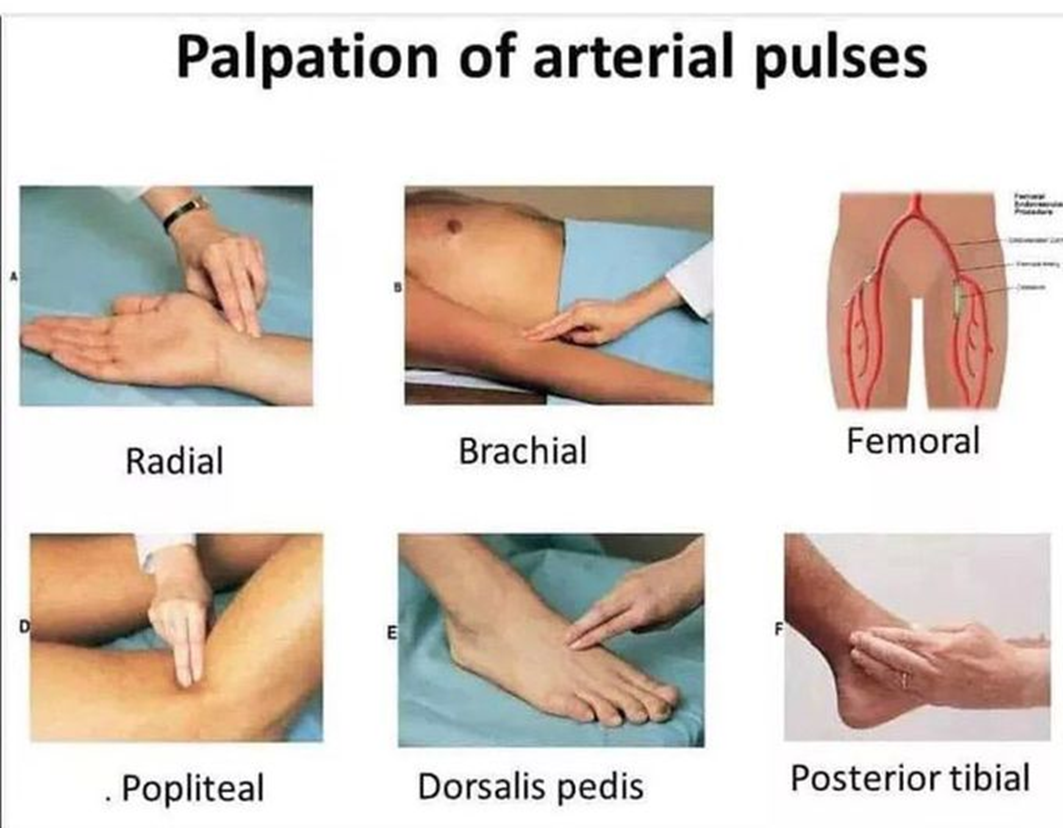One hour following cardiac catheterization via the left femoral site, a client reports feeling weak and dizzy. Assessment reveals that the client's dressing is dry and intact. Which action should the nurse take next?
Measure vital signs and telemetry pattern.
Palpate and compare pedal pulse volumes.
Measure post-procedure intake and output.
Remove the dressing and observe the site.
The Correct Answer is A
Choice A reason: After cardiac catheterization, monitoring the client's vital signs and telemetry pattern is crucial, especially when symptoms like weakness and dizziness are reported. These symptoms could indicate serious complications such as bleeding, arrhythmia, or cardiac tamponade. Monitoring vital signs can help detect hypotension, hemorrhage, or other hemodynamic instabilities. Telemetry is crucial for detecting arrhythmias that may require immediate intervention.
Choice B reason: Palpating and comparing pedal pulse volumes is an important step to assess for vascular complications such as thrombosis or embolism. However, it is not the immediate priority when a client reports systemic symptoms like weakness and dizziness, which could be signs of more serious conditions.
Choice C reason: Measuring post-procedure intake and output is part of routine postoperative care to ensure proper fluid balance. While important, it is not the most critical action to take when a client is experiencing acute symptoms that could indicate life-threatening complications.
Choice D reason: Removing the dressing and observing the site might be indicated if there is suspicion of bleeding or hematoma formation at the catheterization site. However, since the dressing is reported to be dry and intact, and the client is experiencing systemic symptoms, the priority is to assess for potential systemic complications first.
Nursing Test Bank
Naxlex Comprehensive Predictor Exams
Related Questions
Correct Answer is ["B","D","E"]
Explanation
Choice A reason: Sloughing tissue around wound edges may require debridement but does not typically require immediate intervention unless there is a significant change in the wound's condition.
Choice B reason: Loss of sensation could indicate nerve damage or developing compartment syndrome, which is a medical emergency requiring immediate intervention to prevent permanent damage.
Choice C reason: Weeping serosanguineous fluid is expected in burn wounds and does not necessarily require immediate intervention unless there is a significant increase in output or other signs of infection.
Choice D reason: Increased pain and pressure are signs of potential compartment syndrome or infection, both of which require prompt assessment and possible intervention.
Choice E reason: A change in the quality of peripheral pulses may indicate vascular compromise, which requires immediate intervention to restore circulation and prevent tissue death.

Correct Answer is C
Explanation
Choice A reason: While new management's expectations are important, they are not as immediate a concern as job security during restructuring.
Choice B reason: Changes in job descriptions can be a concern, but they are secondary to the more pressing issue of whether employees will retain their jobs.
Choice C reason: Job security is typically the most pressing concern for employees during restructuring, as it directly impacts their livelihood and future with the company.
Choice D reason: Potential changes in employee benefits are important but are generally less immediate than concerns about job security.
Whether you are a student looking to ace your exams or a practicing nurse seeking to enhance your expertise , our nursing education contents will empower you with the confidence and competence to make a difference in the lives of patients and become a respected leader in the healthcare field.
Visit Naxlex, invest in your future and unlock endless possibilities with our unparalleled nursing education contents today
Report Wrong Answer on the Current Question
Do you disagree with the answer? If yes, what is your expected answer? Explain.
Kindly be descriptive with the issue you are facing.
